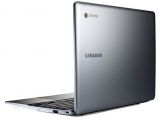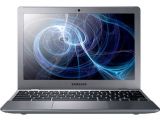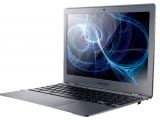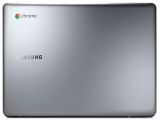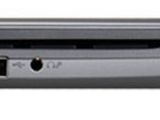As one of Google’s official Chrome OS partners and also the manufacturer of choice for Google’s Nexus phones, Samsung has just announced their second-generation ChromeBook and the world’s first ChromeBox that we reported on here.
When first announced, it seemed that Google’s Chrome operating system was going to take the world by storm in just a few years, just like any other Google initiative. One year has passed and that obviously didn’t happen.
That’s not because Google is not good at making operating systems, as they’ve proved they can do it very well with the Android, but mostly because Chrome OS is maybe too much like a browser and unfortunately not much more.
The ChromeBox and ChromeBooks are not special devices in any way. They are built using specific hardware that Google has programmed for and where most compatibility and stability has been checked.
It would be very difficult for Google to start making, testing and certifying drivers for the hundreds of thousands of hardware combinations that can be achieved when assembling a computer old or new.
Therefore, they are making sure the operating system works correctly on these two configurations and the insides of these are as follows:
The ChromeBook is based on Samsung’s 5 Series design and will boot the system in less than 8 seconds.
The Intel Celeron Dual-Core model 867 inside Samsung’s second-generation ChromeBook is running at 1300 MHz and is based on Intel’s Sandy Bridge architecture. It comes with only 2 MB of level 3 cache and an iGPU running at a default frequency of 350 MHz, but it can Turbo up to 1 Ghz.
The graphics power is several times slower than Intel’s current HD 4000 in Ivy Bridge, so don’t expect it to do wonders.
It comes with a 12.1” screen sporting a 1280 x 800 resolution, a 16 GB SSD and 4 GB or DDR3 SoDIMM RAM.
The memory speed is not specified, but Intel’s Celeron 867 can only support DDR3-1333 and DDR3-1066 memory.
On the connectivity side, it comes with a Gigabit LAN port, a DisplayPort connector, two (unfortunately) USB 2.0 ports, a single audio jack and a 4 in 1 card reader.
The lack of USB 3.0 is not too much of a loss for ChromeBook, as it doesn’t have much storage space to begin with, so what large files and where would you transfer them?
Of course, it comes with a 3G option also and a 1 megapixel webcam.
The ChromeBox is powered by an Intel Celeron B840 processor based on the same architecture, but running at a faster 1900 MHz.
Most of the configuration is the same, with the exception of the lacking card reader and the addition of four extra USB 2.0 connectors.
We don’t really understand where Google’s ChromeBox and ChromeBook fit on the current market, but it is very likely they won’t fit on our desktops or laps at their current $550 and $330 prices.
That’s about €440 for the ChromeBook and €265 for the ChromeBox for European buyers.
Lacking true productivity options and basically being mostly a hardware web browser that won’t be of much use if you’re offline, we wonder who’d buy them and what level of sales these would achieve.
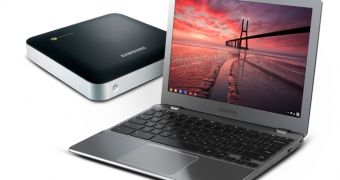
 14 DAY TRIAL //
14 DAY TRIAL // 
